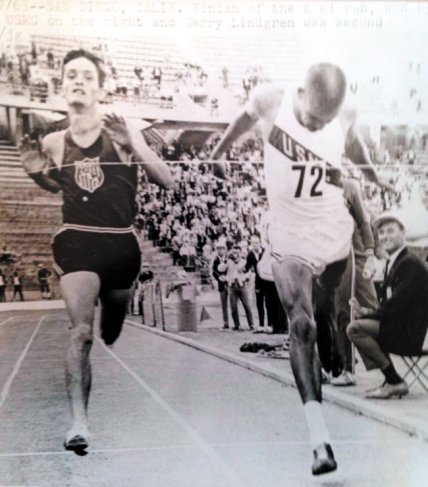Lindgren Recalls Racing World’s Best
Arguably the most heralded athlete in the history of University of Oregon — prior to Heisman Trophy winner Marcus Mariota — was the late long-distance runner Steve Prefontaine. His running exploits, stirred on by movies, Nike commercials and even T-shirts that read “Pre Lives” are the stuff of legend.
Through the late 1960s and the early ’70s, until his death in a car accident at the age of 24 in 1975, Prefontaine’s aggressive and flamboyant style accelerated the running boom. He hardly ever lost in competition.
mw-hogue-021115-mills
One man who beat him, in a historic race nearly five decades ago, is Honolulu’s Gerry Lindgren, a great running star in his own right at Washington State. Lindgren, a three-time NCAA champion and a member of the 1964 U.S. Olympic team, was a few years older than Prefontaine when they first met in Coos Bay, Ore.
“I had heard about this kid, he must have been about 13 or 14 years old, who had been cut from his ball team and I wanted to give him some encouragement,” Lindgren, now 68, tells me. “I went to his house and he immediately knew who I was, but he started jumping up and down all around me, saying ‘I’m bigger than you — I’m going to beat you. I’m going to beat you.'”
Disgusted by Pre’s behavior, Lindgren didn’t stick around long.
“A lot of the runners didn’t like him,” Lindgren recalls. “But I respected him because he worked very hard.”
Lindgren himself also was relentless in his training, running as much as 150-250 miles per week.
“I once ran from downtown Spokane (his home town) to the top of Mount Spokane, had lunch, and ran back the same day. It was an 88-mile round-trip.”
A sprained ankle suffered after winning the U.S. Olympic Trials cost Lindgren a potential medal in the ’64 Olympics, but he battled eventual gold medalist Billy Mills in an epic AAU national championship race the following year. Both were timed in the six-mile race in a world record time of 27:11.6 in a dead heat — the race was officially listed as a tie. “Mills actually leaned at the tape to beat me while I came in straight up, but I learned from that.”
By 1969, Lindgren was a senior at Washington State while Prefontaine was a freshman at Oregon. In a dual cross-country meet prior to the conference championships, Pre beat Lindgren handily. The next time the two went head to head again was in the Pac-8 championships at Stanford.
“I started fast, but Pre raced by me at the top of the hill, and we exchanged the lead back and forth the rest of the way,” Lindgren remembers. “There was a steep uphill before we reached a flat finish and I was so tired, but I knew it would be a sprint to the finish. Pre was elbowing me almost the whole way down the stretch, almost pushing me into the crowd. But at the finish, I remembered to lean, and he didn’t.”
Lindgren was declared the winner “by a nose,” he says. He repeated his winning performance in the next race, downing Prefontaine in the NCAA championships in New York. Pre would never lose a collegiate race at that distance again.
Lindgren would continue his running ways, eventually being named to the track and field Hall of Fame. He has lived in Honolulu since 1980, where he’s well known in the local running community. He coached the University of Hawaii women’s track and field team a few years back and, despite being semi-retired, still works part-time at the University.
He’ll never forget his battles with Prefontaine.
“He was boastful, but he could back it up and that was good,” Lindgren says. “We should have more runners like him.”
And more like Gerry Lindgren — Hawaii’s running legend.
senatorbobhogue@yahoo.com






